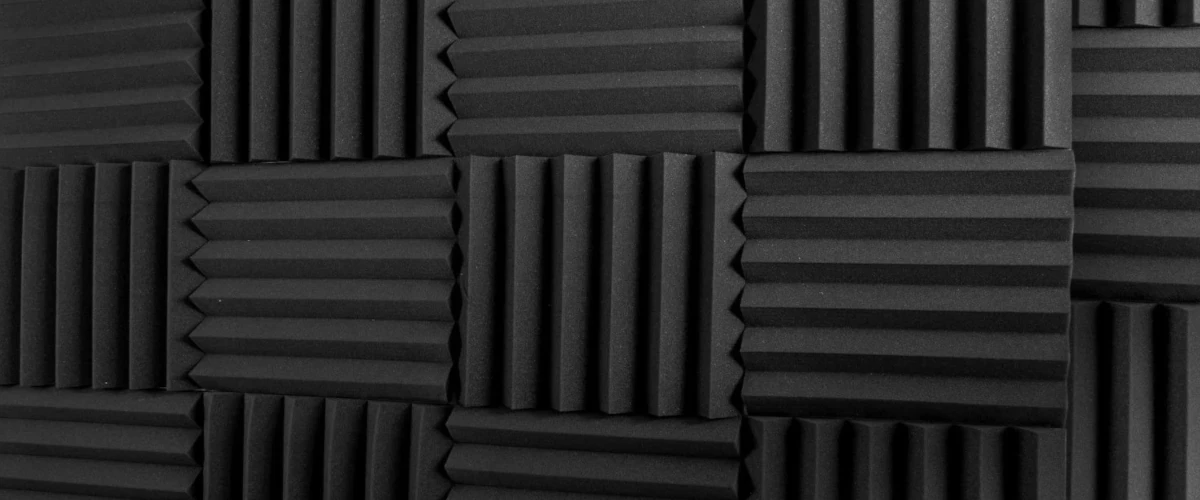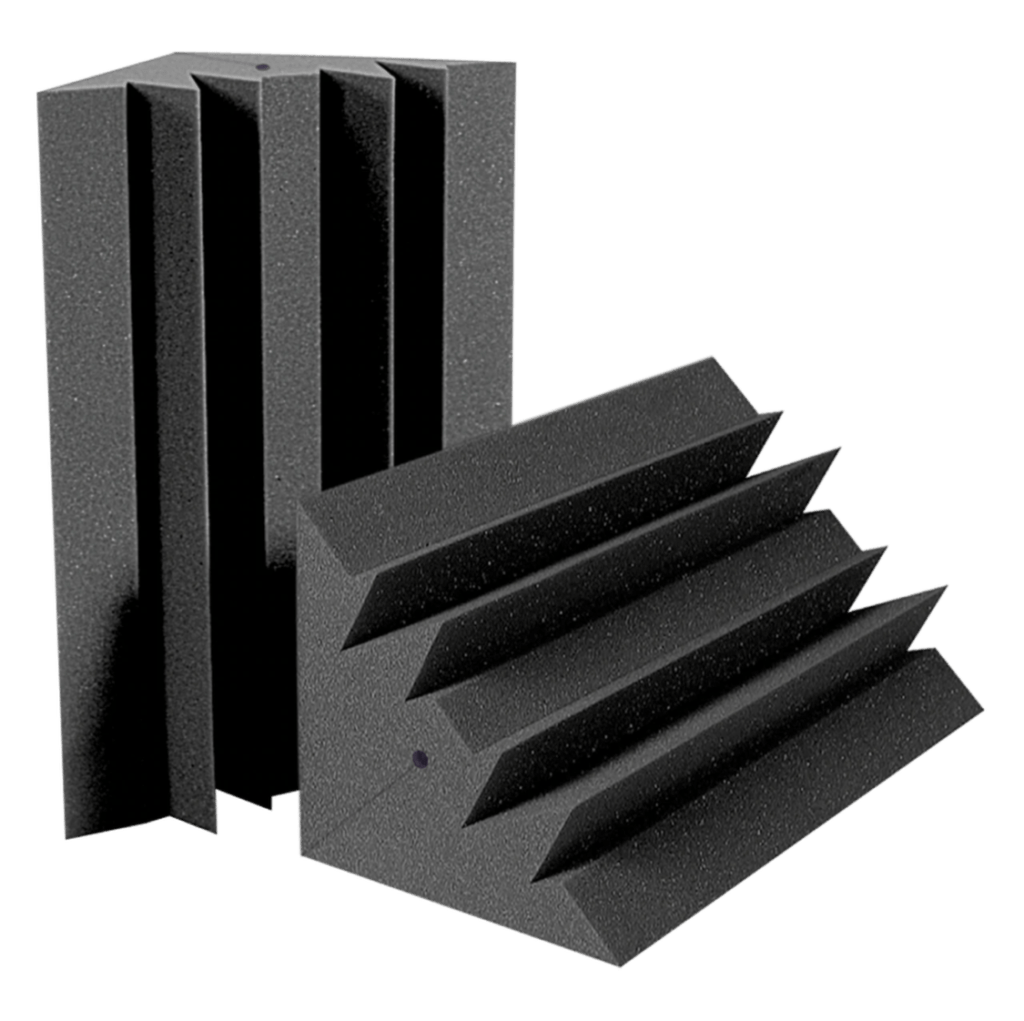
Acoustic Treatment for home theater
A home theatre can be an incredible addition to any home, providing a space to enjoy your favourite movies, shows, and games with family and friends. However, without proper acoustic treatment, even the most high-end equipment can fall short of delivering the immersive sound experience you desire. Acoustic treatment can help you achieve a better balance of sound in your home theatre, by reducing unwanted echoes, reflections, and other acoustic distortions that can detract from the quality of your audio.
Basics of Acoustics
The behaviour of sound waves must first be understood in order to fully understand acoustics. When an object vibrates, sound waves are produced and transmitted through the air as sound. These sound waves can be absorbed, reflected, or transmitted by various materials.
Acoustic foam, carpets, and curtains are examples of soundproofing materials that can absorb sound waves in a home theatre. These components can aid in lowering echoes and reverberation, which can obstruct the audio’s clarity. In addition, solid surfaces like walls and floors can reflect sound waves. As a result, the listening experience may be harmed by echoes and other audio artefacts.
Room Layout
The acoustics are also significantly influenced by the room’s size and shape. Larger spaces frequently have more echo and reverberation, which is not ideal. Smaller spaces can make listening more personal, but they also might have acoustic issues. The room’s size can impact how sound waves interact with the floor, walls, and ceiling.
Acoustics can be significantly impacted by the room’s layout. To create a balanced listening experience, the room’s layout should ideally be symmetrical. This means that the seating area should be positioned in the middle of the room, and the speakers should be positioned at equal distances from the walls.

Acoustic Treatment Techniques
Utilizing tools and methods to manage sound in a space is known as acoustic treatment. In order to achieve this, it may be necessary to absorb sound waves, lessen echoes and reverberation, and manage the frequency response of the room. A home theatre can use a variety of acoustic treatments, including:
Absorption Panels
The most popular acoustic treatment is the use of acoustic panels. They are typically constructed from sound-absorbing materials like fibreglass, foam, or rock wool, a type of mineral wool. The panels can be mounted on walls or ceilings and are made to block out sound waves that would otherwise reflect back into the space. Absorption characteristics vary between various materials. The materials employed, though, work best in the higher-frequency range.
The clarity of the audio can be improved by using absorption panels to lessen echoes and reverberation. They can also aid in regulating the frequency response of the space, which is helpful for enhancing the audio quality.
Bass Traps
Specialized acoustic panels called bass traps are made to block out low-frequency sound waves. They are made to be installed in the room’s corners and are typically bigger and thicker than regular acoustic panels. Standing waves, which can cause low-frequency areas in the room, can be lessened with the aid of bass traps.
Standing waves can make areas of the room where the pressure is high and low, obstructing the audio’s clarity. These standing waves can be diminished and a more uniform frequency response can be produced by using bass traps.

Diffusers
Acoustic panels called diffusers are used to disperse sound waves in various directions. The amount of sound that is reflected back into the room may be lessened as a result. To create a well-balanced sound environment, diffusers are typically used in conjunction with acoustic panels and bass traps.
Placement of Speakers and How Acoustics Are Affected
The placement of your speakers is the first step in ensuring high-quality, evenly distributed sound in your home theatre. Here are some pointers for setting up your home theatre speakers:
- The centre speaker is the most crucial speaker in a home theatre system because it handles the dialogue and anchors the soundstage. Place the centre speaker above or below the TV. When seated, it should ideally be placed at ear level above or below the TV.
- Place the centre speaker between the front left and right speakers at an equal distance: The primary audio content, which includes music and sound effects, is sent to the front left and right speakers. They should be positioned at an equal distance from the centre speaker to ensure an accurate and balanced soundstage.
- Use floor stands or wall mounts for the front speakers: These accessories give the speakers a secure and stable platform. When using floor stands, make sure they are positioned at the centre speaker’s height and distance.
- Place the surround speakers at ear level to fully immerse the listener in the audio experience. The surround speakers produce directional and ambient sound effects. Ideally on the side walls or behind the viewer, they should be placed at ear level.
- Use a subwoofer for low-frequency effects: Deep bass notes and explosions are examples of low-frequency effects that can be produced with a subwoofer. It should be put in a prominent spot, like in front of the TV or in a room corner.
- Avoid mounting speakers in corners because doing so can cause boomy, and artificial bass. Instead, place them a minimum of a few feet from the corners.
Acoustic Treatment Installation Guide
- Pick out the trouble spots before installing acoustic panels. There are too many sound reflections in these places, which causes echoes and reverberations. You can check for the echo by clapping your hands in different locations. Problematic areas include those with protracted echoes or ringing noises.
- In reflection points, where sound waves bounce off surfaces and create echoes, panels should be placed. Acoustic panels should be placed on reflective surfaces like the wall in front of the speakers or the back of the seating area. To locate reflection points, use a mirror. It is a reflection point if you can see the speaker or their reflection in the mirror.
- Placing panels on the ceiling can significantly improve sound quality. Despite this, the ceiling is frequently overlooked when it comes to acoustic treatment. To reduce reflections and increase clarity, hang acoustic panels from the ceiling.
- Use bass traps in corners because bass frequencies tend to build up there and produce boomy, unnatural bass. For better bass response, install bass traps in corners to absorb these frequencies.
- Diffusers should be used in the back of the room to create a more open and natural sound by dispersing sound waves in various directions. Diffusers should be placed in the back of the room to increase the impression of depth and space.
- Use absorption panels to block mid- and high-frequency sound waves, which cause echoes and reverberations. To lower these frequencies and increase clarity, install absorption panels where there are issues.
